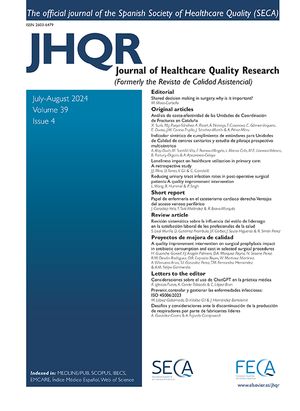La densitometría dual de doble energía de rayos x (DEXA) permite una medida directa y no invasiva de la densidad mineral ósea (BMD). El objetivo del estudio fue proporcionar recomendaciones para el uso apropiado de la densitometría en nuestro hospital para conseguir un diagnóstico certero y un tratamiento adecuado. Una comisión interdisciplinaria realizó una revisión sistemática de la bibliografía.
Beneficios, daños y costesEl diagnóstico temprano de la osteoporosis a través de la densitometría ósea minimiza lesiones, mejora la calidad de vida y reduce el coste personal y social asociado a esta patología. Como inconvenientes tiene la exposición a radiaciones ionizantes y el coste. Los inconvenientes y el coste del uso apropiado de la DEXA son mínimos comparados con el coste de la osteoporosis.
RecomendacionesLa densidad mineral ósea debe evaluarse sólo cuando sea necesario para el manejo clínico del paciente. DEXA es el mejor método para medir la densidad mineral ósea. Salvo que se sospeche una pérdida de masa ósea acelerada la DEXA no debe repetirse antes de los 2 años para monitorizar tratamientos. Las medidas y los informes de resultados deben estandarizarse.
Dual energy X-ray absorptiometry (DEXA) allows non-invasive direct measurement of bone mineral density. The aim of this study was to provide guidelines for the appropriate use of DEXA in our hospital in order to promote accurate diagnosis and timely, appropriate treatment. A multidisciplinary commission performed a systematic review of the relevant literature.
Benefits, harms and costsEarly diagnosis through DEXA allows proper management of osteoporosis to minimize injury and disability, improve quality of life and reduce the personal and social costs associated with this condition. Potential harms include radiation exposure and cost. The harms and costs of the appropriate use of DEXA are minimal compared with those associated with osteoporosis.
RecommendationsBone mineral density should be measured only to assist in making decisions on clinical management. DEXA is the best method of measuring bone density. Unless accelerated bone loss is suspected, DEXA should not be repeated within 2-year intervals to monitor therapy. The measurement and reporting of results should be standardized.






